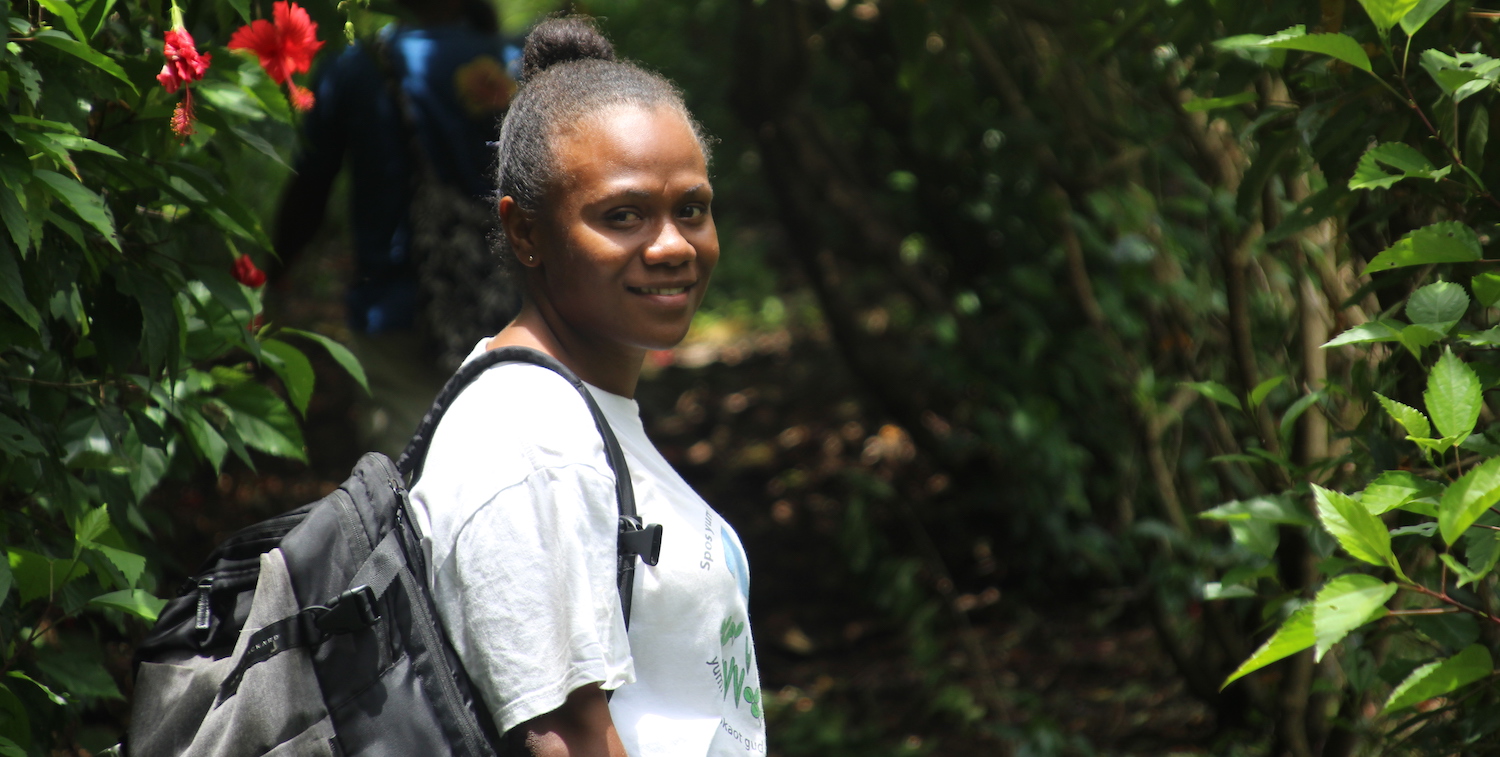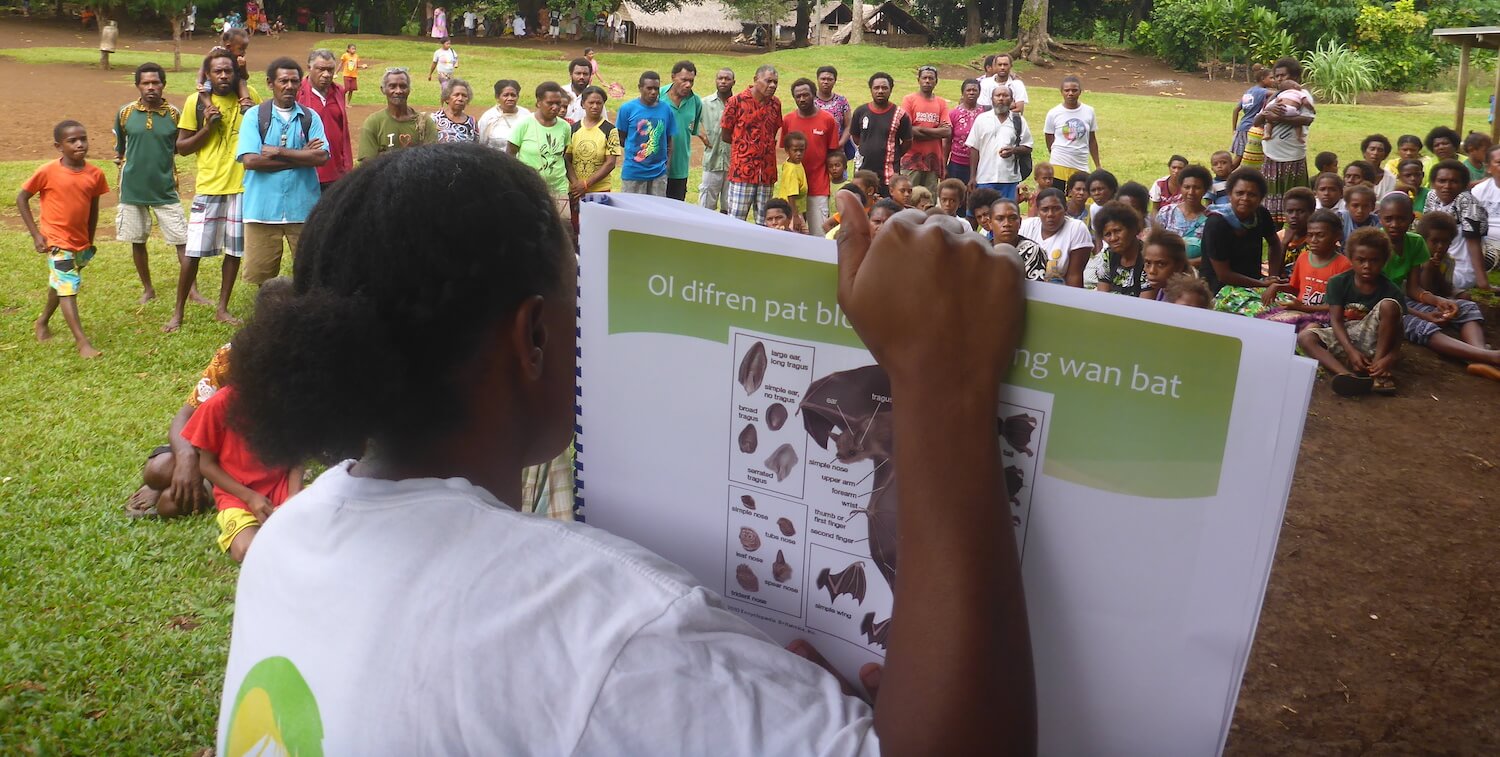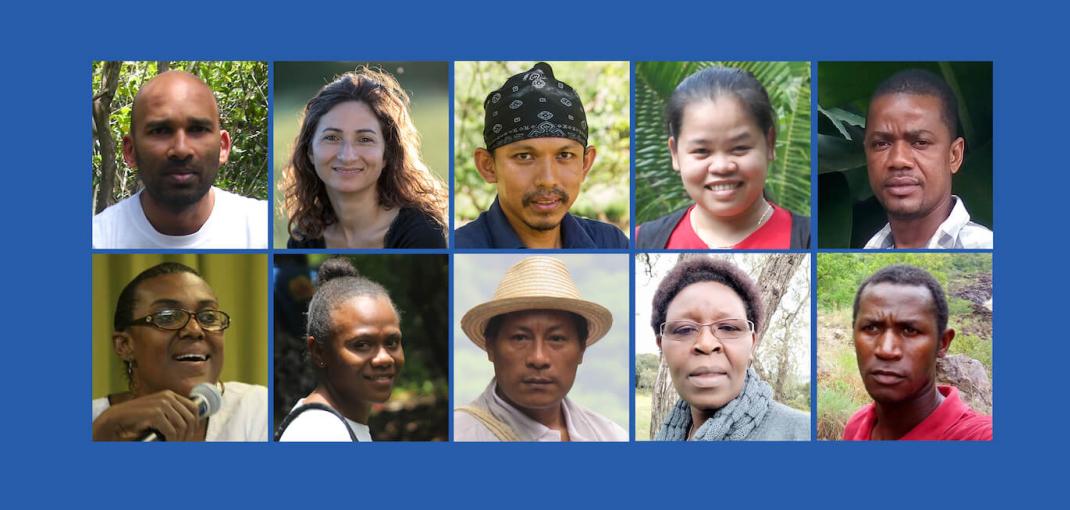After graduating in 2016 from the University of the South Pacific in Fiji, biologist Martika Tahi returned to her home country to join the newly formed Vanuatu Environmental Science Society (VESS).
Vanuatu, part of the East Melanesian Islands Biodiversity Hotspot, is an archipelago of 83 islands where the majority of people live in rural areas and depend on natural resources. VESS serves a critical conservation role by combining local, Indigenous knowledge with scientific study.
With help from several CEPF grants, Ms. Tahi has conducted much-needed scientific surveys of bats, seagrass and dugongs around Vanuatu’s remote islands. Her outreach to remote communities on the importance of species conservation has reduced the hunting of bats on several islands while protecting the vital ecosystem services these species provide.
In Her Words
What would you say are the biggest threats currently facing Vanuatu’s ecosystems and biodiversity?
I would say natural disasters and an increase in human population are the biggest threats to Vanuatu’s ecosystems and biodiversity. Vanuatu is prone to natural disasters. Just recently, the northern islands of Vanuatu experienced a Category 5 tropical cyclone called TC Harold. Root crops were greatly damaged. Birds, bats and other wildlife had no place to live. The high demand for food directly puts pressure on the resources, ecosystems and biodiversity.
CEPF: How have you seen Vanuatu’s nature change over your lifetime?
Martika: Vanuatu’s biodiversity and resources were well utilized and managed traditionally in the past. However, the increase in human population in the past years puts pressure on the ecosystems and resources. In some communities, resources were exhausted.
CEPF: Have people’s mindsets about the importance of conservation changed over time?
Martika: In Vanuatu, land is traditionally owned. Conservation measures on resources and ecosystems are practiced traditionally and yet resources are continuing to deplete. The government and environmental NGOs have provided scientific assistance to communities across the islands to better manage their resources. Awareness-raising and community trainings on biodiversity and threatened species, including conservation areas, has greatly increased their knowledge. Communities have seen the importance of incorporating traditional knowledge and scientific knowledge together. As a result, many are accepting of conservation projects being carried out in their areas.
CEPF: Conservation work is difficult and often comes with setbacks. What keeps you motivated?
Martika: The passion and enthusiasm of communities who are willing, and are already, taking measures to protect the threatened and endemic species in their areas. Giving the time, knowledge and strength to educate and train people about conservation and knowing that they are learning something new is what motivates me to continue.
CEPF: What do you wish people knew about Vanuatu?
Marika: Vanuatu is a beautiful country with great diversity. Voted twice as the happiest place on Earth. You will find friendly smiles wherever you go. It is rich in biodiversity, has unique cultures and traditions. Vanuatu is one of the best places to dive or see dugongs. It has cute bats, too!
CEPF-Funded VESS Projects
- Conservation of the Endemic Flying Foxes of Torba and Temotu in Vanuatu and the Solomon Islands (2017 - 2020)
- Strengthening Monitoring, Community Management, and Policies for Dugong Conservation in Vanuatu (2017 - 2020)
- Building Capacity in Conservation Science and Environmental Education in Vanuatu (2016 - 2018)
- Supporting VESS in its First Year; Developing Dugong and Seagrass Educational Materials (2015 - 2016)







